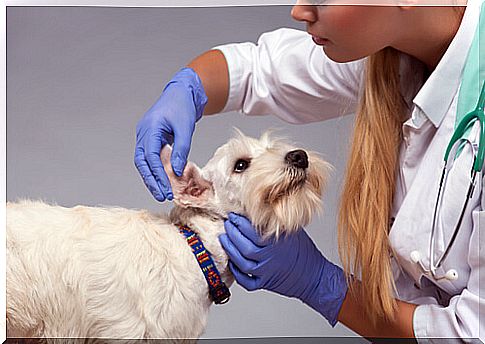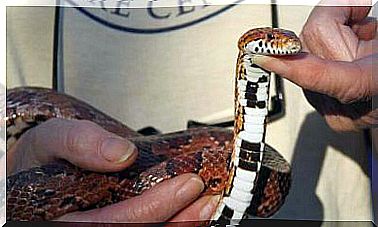What Is Otohematoma In Dogs? Find Out Here!

Otohematoma is, as the name implies, a hematoma that can form in your dog’s ear because of the accumulation of blood on the lamina of auricular cartilage. This liquid formation, which causes an inflamed appearance, is located on the inner surface of the ear and is one of the most common traumatic lesions affecting dogs’ ears.
Main causes of otohematoma in dogs

Self trauma is one of the main causes of otohematoma in dogs. For various reasons, dogs can hurt their own ears on their own, especially when they are enthusiastic about their games.
However, it also usually appears in animals that suffer from external otitis or dermatitis of the pinna.
These illnesses cause dogs to scratch their ears more than usual or to shake their heads excessively, which causes pain.
Otohematoma – which affects more breeds with pendulous ears, such as the B asset, Cocker and Weimaraner breeds – is produced when the dog, when hitting, scratching or rubbing, breaks the blood vessels in its ear, causing , well, a bleeding.
This blood accumulates on the lamina of cartilage in the ear, which begins to twist or deform.
In erect-eared dogs, the weight of this content can cause the pavilion to fall sideways, generating a very marked contrast – both in shape and position – with respect to the unaffected ear.
If the animal is not treated quickly, this accumulation of blood tends to take on a hard consistency and becomes more difficult to eliminate.
For this reason, you should pay close attention to the symptoms and avoid delay in seeking a veterinary appointment.
When you notice persistent itchy ears, frequent head shakes, or notice inflammation in your pet’s ear area, take him to the vet immediately.
If the hematoma sets in, the pinna may retract and produce a permanent deformation in the normal architecture of the ear.
A quick and effective diagnosis will prevent this collateral damage known as “wrinkled ear”, “cabbage ear” or “cauliflower ear”.
Treatment of otohematoma in dogs

If your dog is suffering from this problem, take it easy. With proper treatment, the otohematoma will be resolved without major complications : the veterinarian will be able to perform punctures, apply anti-inflammatory drugs or drain it surgically.
If you choose drainage, keep in mind that:
- The practitioner will sedate your pet and first thoroughly clean the pinna and external ear canal.
- Then you will make a cut, which will not take long to heal over the days.
- To avoid irrigation losses and main vessel collapse, the veterinarian should locate the points parallel to the longitudinal axis of the ear. In order to keep the inner skin in contact with the cartilage, it is important that tension be kept to a minimum.
Furthermore, the idea is that, to perform these procedures, the external part of the pinna is not injured. This will prevent:
- The growth of the new one attracts your dog’s attention and, for this reason, it starts scratching the area again or shaking its head, which may cause another otohematoma.
- Your ear is left unprotected because of the post-itch alopecia that usually appears in certain breeds.
After treatment by your trusted veterinarian, you will have to follow their advice to avoid possible complications:
- Check the bandage that was made to compress the pinna.
- Give your puppy the medication indicated, in the appropriate doses and complying with the stipulated number of days for the treatment.
- Try to have your pet permanently wear an Elizabethan collar for the duration of the healing process. That way you’ll prevent him from taking the stitches and scratching the wound.
Keep in mind that successful surgery can end in failure if the pet owner does not adequately comply with aftercare.
Also remember that, in case of any abnormal symptoms in your dog, you should always seek professional assistance.
In the case of otohematomas, if you try to solve the problem on your own, you can cause strong infections that would only aggravate the condition.









